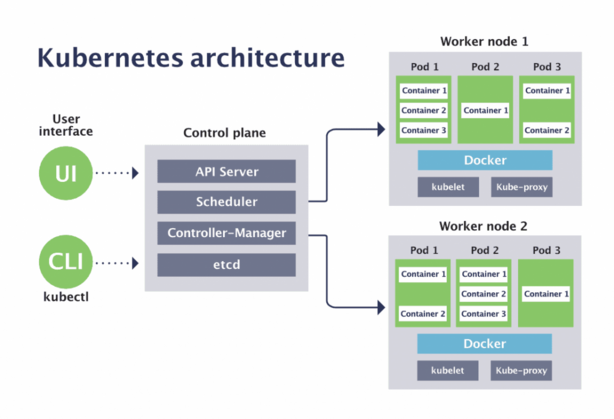Upgrade & Secure Your Future with DevOps, SRE, DevSecOps, MLOps!
We spend hours on Instagram and YouTube and waste money on coffee and fast food, but won’t spend 30 minutes a day learning skills to boost our careers.
Master in DevOps, SRE, DevSecOps & MLOps!
Learn from Guru Rajesh Kumar and double your salary in just one year.
– What is Kubernetes?
Kubernetes is an open-source container orchestration framework developed by Google to manage containerized applications (Docker, Rkt, etc…)
– Why Do we need Kubernetes?
Rise of containerized applications and managing them across multiple environments
– Benefits of Kubernetes?
- High availability or no downtime
- Scalability or high performance
- Disaster recovery – backup and restore
– How Kubernetes works aka Kubernetes architecture with image?

Kubernetes consists of a master node and worker nodes.
Master node contains API server, scheduler, controller-manager and etcd.
Worker node contains kubectl, kube-proxy, container run time environment, pods and containers.
Each pod is going to have an unique IP and can communicate with other pods across nodes using kube-proxy
Each node can communicate with any pods within the cluster
Pod is the smallest unit in the Kubernetes

 Starting: 1st of Every Month
Starting: 1st of Every Month  +91 8409492687 |
+91 8409492687 |  Contact@DevOpsSchool.com
Contact@DevOpsSchool.com